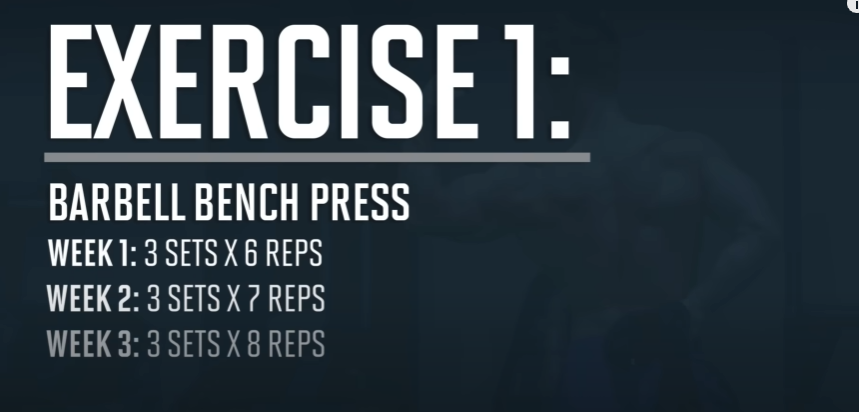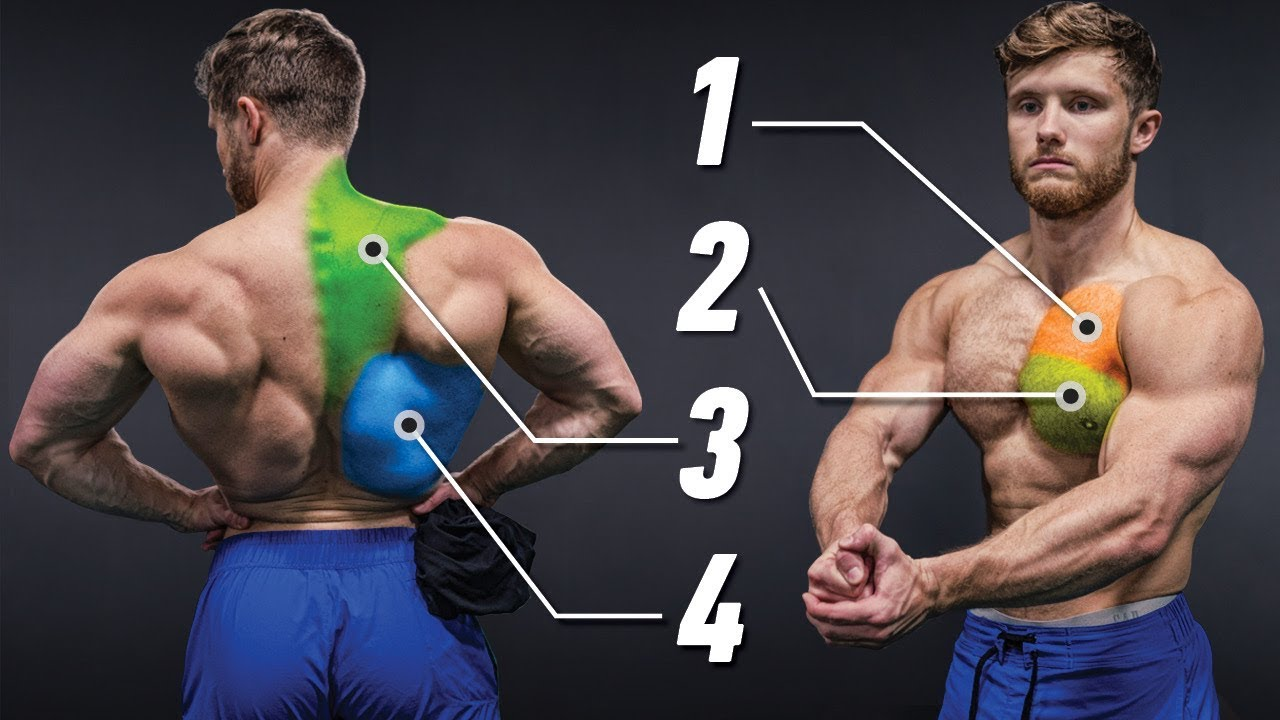Building a massive, well-proportioned upper body requires more than just hammering random exercises. If you want both size and strength gains, you need a program designed with progressive overload, strategic exercise selection, and evidence-backed techniques.
This chest-and-back focused session, which works perfectly in an upper/lower split, is designed to maximize muscle growth while keeping recovery manageable. Whether you train four or six days per week, this routine provides enough volume for noticeable results—especially if you’re an intermediate lifter still chasing significant strength improvements.

1. Barbell Bench Press: The Foundation for Chest Development
If you had to pick just one exercise to build the pecs, the bench press is still king. Research consistently shows a strong relationship between bench press strength and chest hypertrophy—as your one-rep max improves, pec thickness follows.
In this workout, you’ll perform 3 sets of 6 reps, gradually increasing reps each week (6 → 7 → 8) before cycling back to heavier weight in week four.
Form and Technique Tips
- Grip: Use a slightly wider grip to emphasize the mid-chest (sternal fibers).
- Arch: Keep a controlled arch in your back for stability and maximum pec recruitment.
- Tempo: Lower the bar slowly, pause briefly at the chest, then explode upward with maximum speed.
A 2014 study highlighted that lifting explosively on submaximal sets produced nearly double the strength gains compared to slower reps—so if you’re not pushing to failure, move the bar as fast as you can while maintaining control.
2. Weighted Pull-Ups with Forced Negatives: Lat Thickness and Strength
For back width and thickness, pull-ups remain unmatched. But to take hypertrophy to the next level, we’re adding eccentric overloads (negatives).
How to Perform
- Main Sets: 3 sets of 8 full pull-ups, focusing on a strong stretch at the bottom and a full contraction at the top.
- Forced Negatives: After your last rep, use a box or partner to help you get over the bar, then lower yourself slowly for two additional eccentric reps.
According to muscle hypertrophy expert Dr. Brad Schoenfeld, eccentrics can recruit additional motor units, making them highly effective for stimulating growth beyond normal concentric reps.
If bodyweight pull-ups are too difficult, start with the assisted pull-up machine for the first 8 reps, then perform the negatives unassisted.

3. Barbell Floor Press: A Triceps and Lockout Strength Builder
While powerlifters often use the floor press to improve bench lockout strength, bodybuilders can benefit too. This movement targets the triceps more directly than a standard bench press while still improving pressing power.
Execution
- Perform 2 sets of 8–10 reps with a moderate grip (~1.5 times shoulder width).
- Keep your elbows tucked and eliminate leg drive—this isolates the triceps and forces strict upper-body pressing.
Start light, as you won’t be able to move as much weight without leg assistance, and gradually increase load weekly.
4. Unilateral Cable Row: Fixing Back Imbalances
Many lifters develop noticeable left-to-right strength and size differences in their back muscles. Adding unilateral work is an excellent way to correct this.
Setup & Execution
- Perform 3 sets of 12 reps per side.
- Start with your weaker side, then match the same reps with the stronger side.
- Focus on pulling your elbow down and toward your ribs, which targets the lats more than the traps.
5. Arnold Press: Full Shoulder Development
The Arnold press, named after Arnold Schwarzenegger, is an excellent accessory lift for shoulder hypertrophy. Unlike standard presses, it begins with horizontal shoulder abduction, recruiting the rear delts before transitioning into a classic overhead press.
How to Do It
- 2 sets of 12 reps, performed standing.
- Keep the movement controlled—going too heavy compromises form.
- Expect your side delts to work harder due to stabilization demands.
6. Rear Delt Mechanical Drop Set: Reverse Pec Deck
Rear delts are often underdeveloped compared to the front delts. This reverse pec deck variation uses a mechanical drop set to target them effectively.
Execution
- Perform 10 reps slouched forward, keeping the traps out of the movement and isolating the rear delts.
- Without resting, switch to 10 more reps with an upright torso, allowing the traps to assist and extend the set.
This technique ensures the rear delts are trained to near failure before the traps help complete the final reps.
7. Rope Triceps Pushdowns (21s Method)
Finish the pressing muscles with a high-rep triceps burnout using the classic 21s method.
- 7 bottom-half reps (squeeze hard at lockout)
- 7 top-half reps (focus on stretching the triceps)
- 7 full-range reps to failure
Since isolation work carries minimal systemic fatigue, it’s safe to push close to failure here.
8. Constant-Tension Preacher Curls (Optional Biceps Finisher)
Even though your biceps already work during pull-ups and rows, direct isolation helps maximize arm growth.
Execution
- Perform 2 sets of 15–20 reps with constant tension—don’t rest at the top or bottom.
- Keep the wrists slightly extended to reduce forearm involvement, letting the biceps handle the workload.

Weekly Volume & Progression
This routine provides ample weekly volume for most lifters when used in a 4-day upper/lower split. Intermediate lifters can expect solid size and strength progress with this frequency, while advanced athletes may need to add a third upper-body day targeting weak points.
For long-term success:
- Gradually increase load or reps over time.
- Cycle intensity with 3-week waves (volume peaks in week 3, then resets with heavier weight in week 4).
- Keep 1–2 reps in reserve on compounds to manage fatigue.
Final Thoughts
This upper-body workout combines heavy compound lifts, evidence-based hypertrophy techniques, and strategic accessory work to build a bigger chest, wider back, and thicker arms.
If you’re serious about size and strength, track your lifts weekly, progressively overload, and fuel your training with adequate nutrition—muscle growth thrives on both smart programming and recovery.



